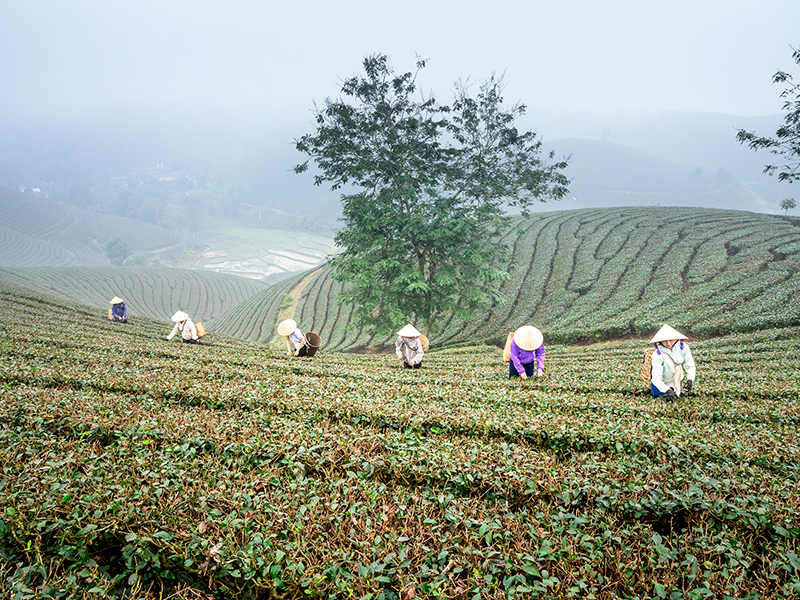
Authors
-
Lauren Shields
Former Director, BSR
-
Margaux Yost
Former Manager, HERproject, BSR
“In today’s global economy, brands must understand the industry needs in the new countries they source from. At The Children’s Place, our aim is to support the development of the new garment workforce in Ethiopia and do our part to bring sustainable business practices to the region.” —The Children’s Place
Today, Ethiopia is a small player in the apparel industry—representing less than half of 1 percent of global clothing exports. But with export earnings growing from US$60 million to US$160 million in the past five years, and the Ethiopian government setting a target to reach US$1 billion by 2020, the industry has the opportunity to drive job creation and inclusive growth. And early interest from large international buyers such as The Children’s Place signals the potential to attract more companies to increase their sourcing footprint in Ethiopia.
But in order to achieve sustainability over the long term, Ethiopia’s nascent apparel industry must embed good business practice from the beginning.
During the scoping study for our new report, “Ethiopia’s Emerging Apparel Industry: Options for Better Business and Women’s Empowerment in a Frontier Market,” BSR’s HERproject team interviewed buyers, foreign investor suppliers, government, donors, and female workers—who represent nearly 90 percent of the Ethiopian apparel workforce—to identify factors that will support inclusive growth. We learned that while Ethiopia is considered a frontier market with favorable demographics, low production costs, and promising long-term growth prospects, the industry needs to address a number of challenges. While interventions are needed in several areas, within the factory walls, three key challenges emerged:
- Recruitment: Although Ethiopia’s 90 million citizens potentially represent an abundant labor pool for the apparel industry, recruiting workers has been a significant challenge. Efforts have been made to build and maintain a labor pipeline by investing in worker sourcing, screening, grading, and hiring. Making apparel jobs an attractive opportunity—particularly for the young women who comprise the majority of Ethiopia’s apparel labor force—will be critical to developing a stable recruitment pipeline.
- Productivity: Many of the women in the labor force come from rural areas and are entering formal employment for the first time. Few employees have worked in the industry previously and thus lack the technical skills required. Adjusting to the factories’ regimented work environment has also proven to be difficult for these workers, who reported difficulty starting shifts on time and are frequently absent. Addressing skills, providing additional support during the induction period, and creating incentives for improved performance will be important to increase productivity.
- Retention: The industry currently faces 8 percent monthly turnover rate, which amounts to a completely new workforce on an annual basis. In our worker focus groups, workers told us they sometimes have low motivation and low job satisfaction. One factor workers mentioned is poor relationships with management, posts which are filled by foreign nationals in industrial parks we visited. Some women we spoke to are turning their hopes to jobs in construction or domestic work in the Middle East that offer better pay. The industry will need to consider how to create a more positive and supportive work environment to keep these female workers in the job.
Stakeholders we met are keenly aware of the challenges—and opportunities—for the industry. In April, we facilitated a roundtable dialogue with 35 participants across sectors, some of whom have already begun programs to invest in a skilled and empowered workforce. Enterprise Partners, with support from the U.K.’s DFID, is establishing a program to recruit workers and give them training on soft skills such as teamwork and communication. The ILO, H&M, and Sida are collaborating on a program to increase productivity, improve social dialogue, and promote good working conditions and wages. BSR’s HERproject is partnering with The Children’s Place to create a supportive work environment for female workers. Our program, which focuses on increasing worker ability and empowerment, also aims to strengthen management skills and systems.
These initiatives are encouraging, but more collaboration is needed among business, donors, NGOs, and government to learn from challenges in other sourcing countries and ensure that Ethiopia’s burgeoning apparel industry can thrive over the long term. If that happens, the industry will provide a pathway for dignified jobs for an empowered female workforce and it will support the country’s much-needed economic growth.
BSR’s latest sustainability insights and events straight to your inbox.
Topics
Collaborative Initiatives
Let’s talk about how BSR can help you to transform your business and achieve your sustainability goals.







